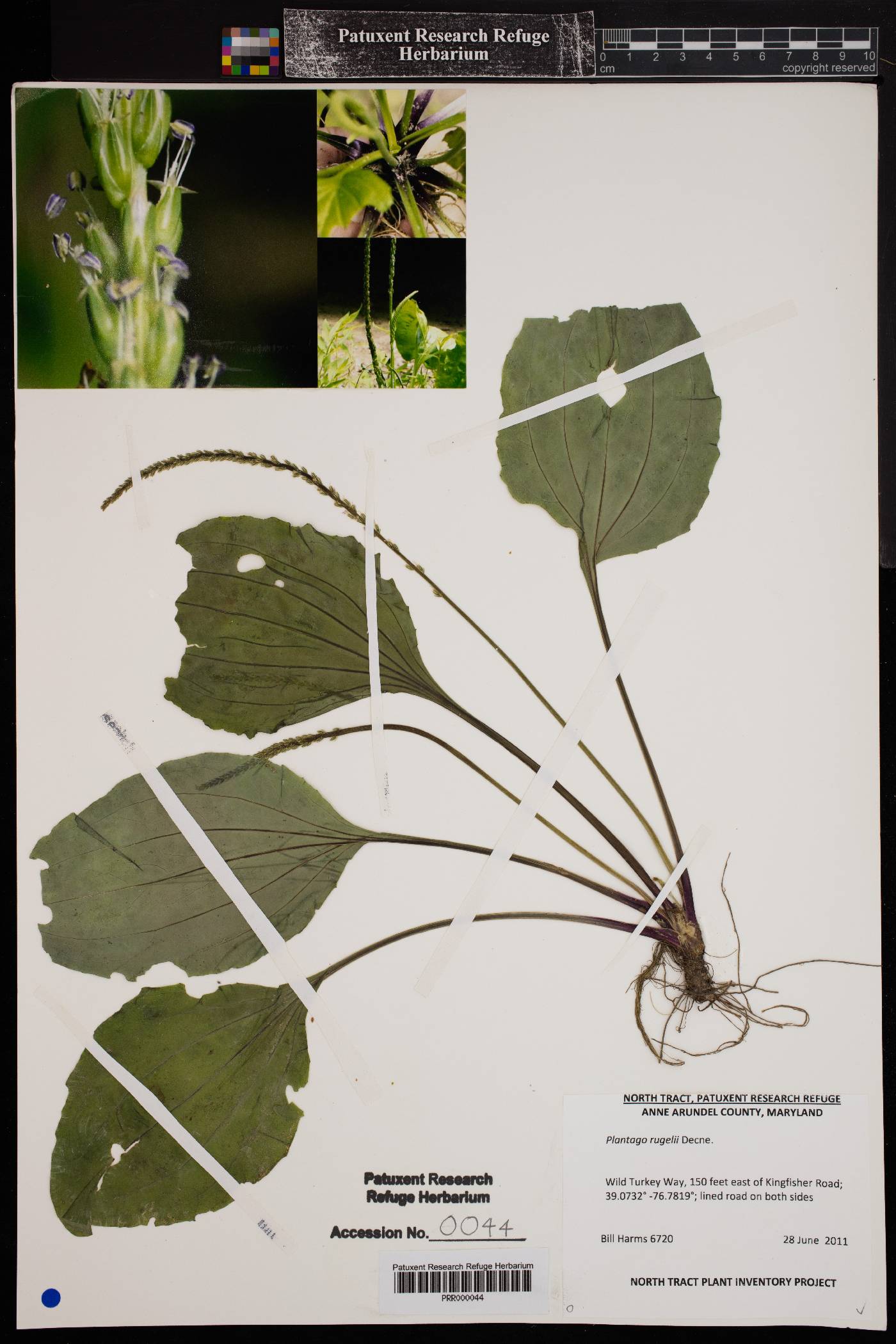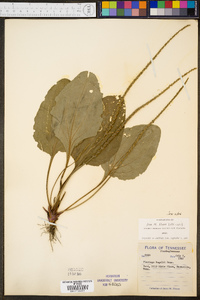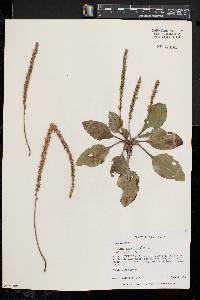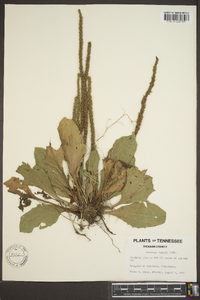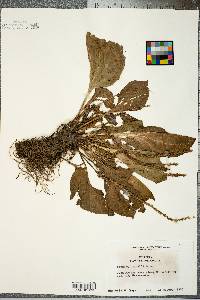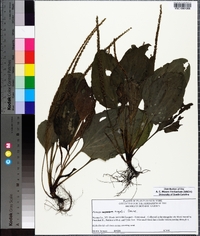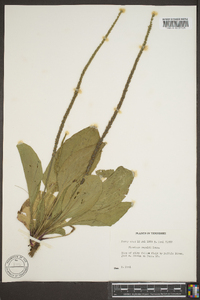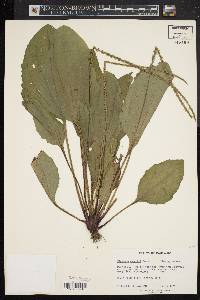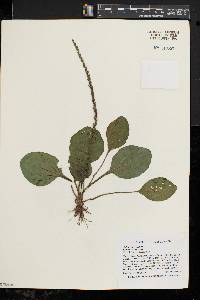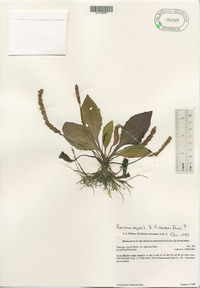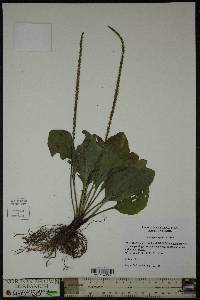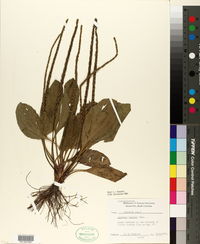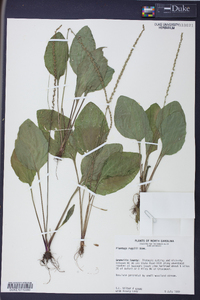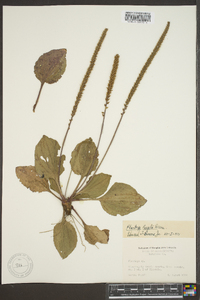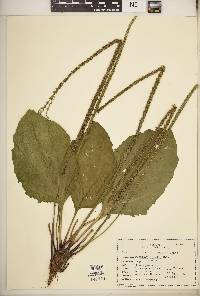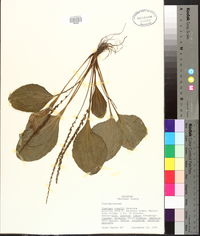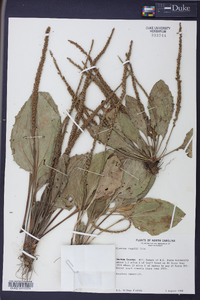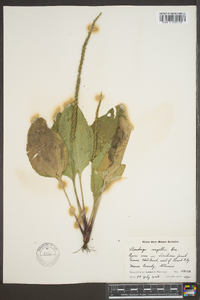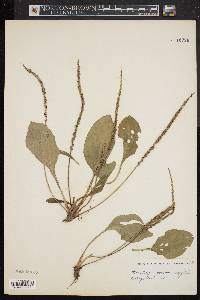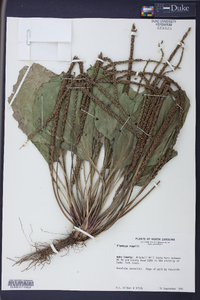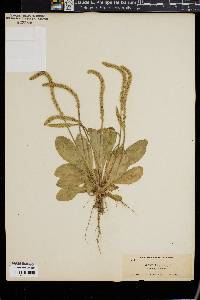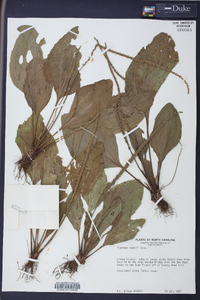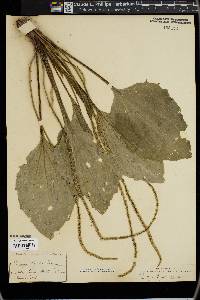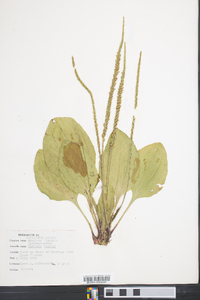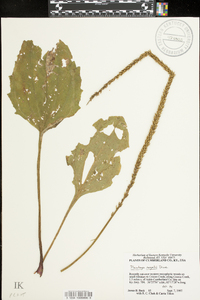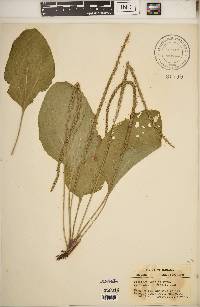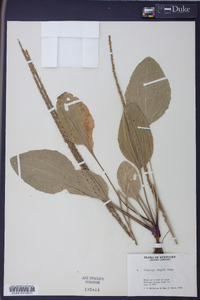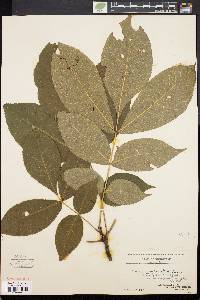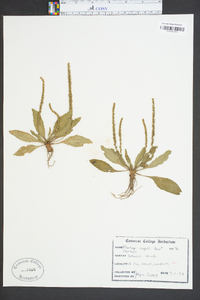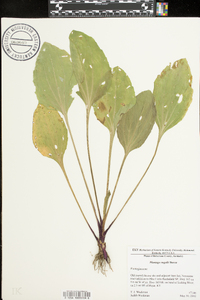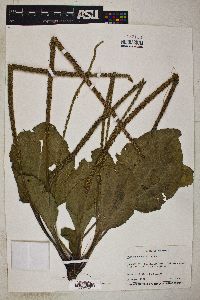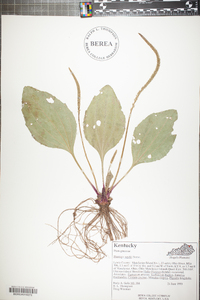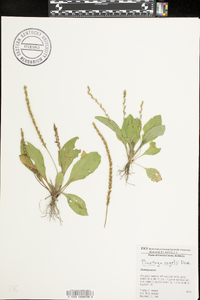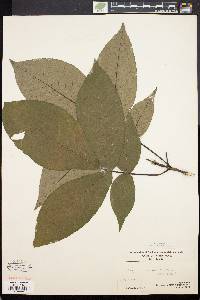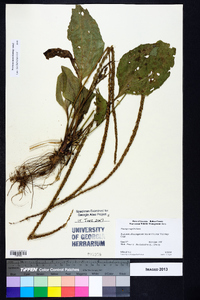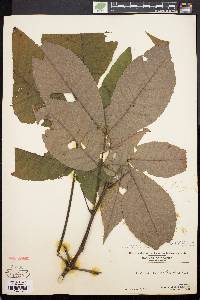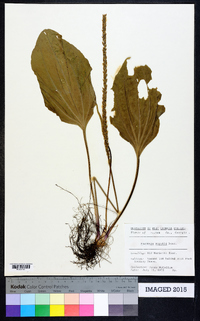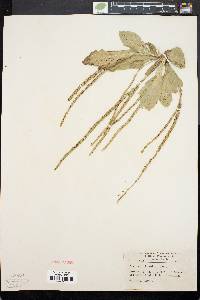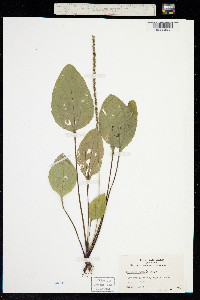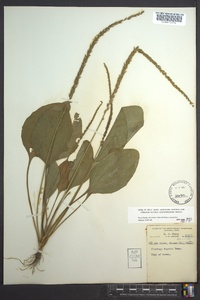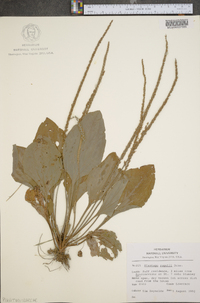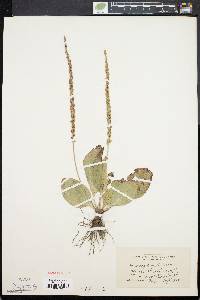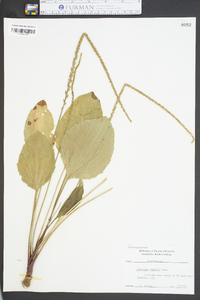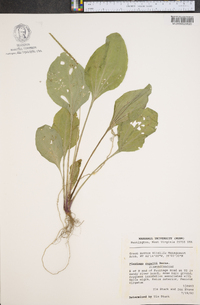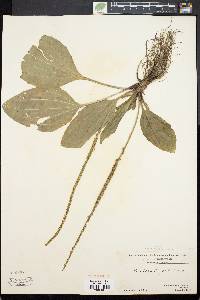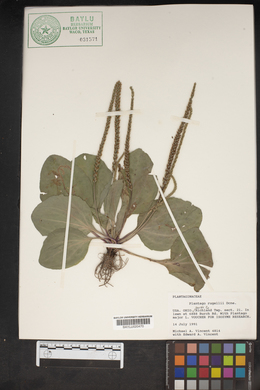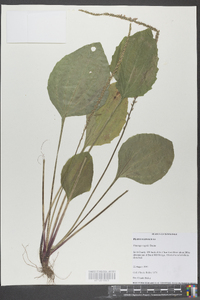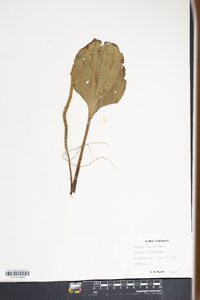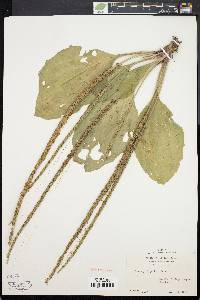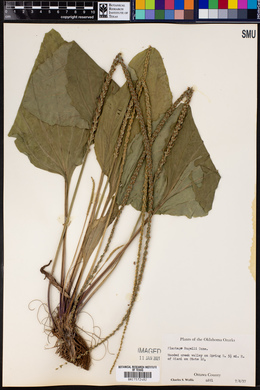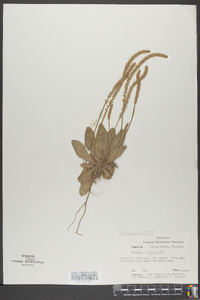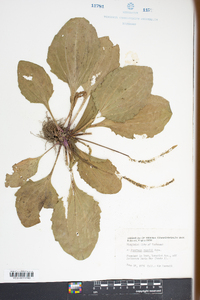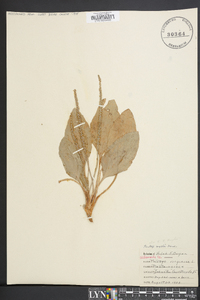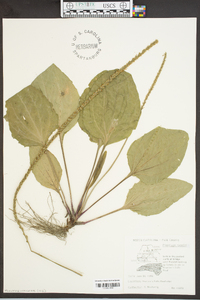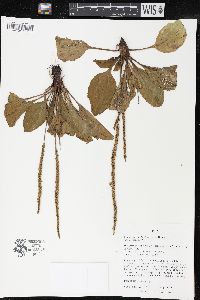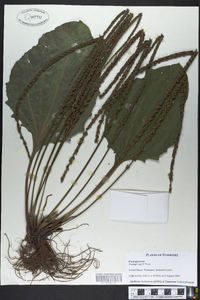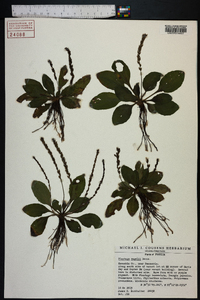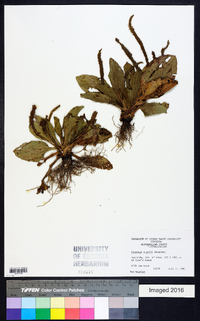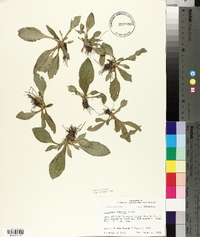
|
|
|
|
Family: Plantaginaceae
Black-Seed Plantain, more...Rugel's plantain, broad-leaved plantain, blackseed plantain
[Plantago rugelii var. alterniflora Farw.] |
Perennial herb with fibrous roots flowering stem 5 - 25 cm tall Leaves: basal, upright or spreading, thick-stalked, 4 - 18 cm long, 1.5 - 11 cm wide, broadly elliptic to broadly egg-shaped with an abruptly contracted base, more or less parallel-veined, strongly veined, sometimes irregularly toothed, sometimes minutely hairy. Leafstalk purplish at the base. Inflorescence: a narrow, dense spike of many flowers, arising from a leafless stalk (scape), 5 - 30 cm long, less than 1 cm wide. Flowers: stalkless or nearly stalkless, whitish, subtended by narrowly lance-triangular bracts. Bracts 2 - 4 mm long, prominently keeled. Stamens four, exserted, alternate with corolla lobes. Style one. Sepals: four, green, 2.5 - 3 mm long, egg-shaped or oblong with a pointed tip, scarious-margined (dry, thin, and membranous), with a sharp keel. Keel much wider than the scarious margin. Fruit: a dehiscent capsule (circumscissile), brown to purplish, 4 - 6 mm long, slenderly egg-shaped or narrowly ellipsoidal. Seeds four to ten, 1.5 - 2 mm long. Corolla: four-lobed, whitish, less than 1 mm long, scarious (dry, thin, membranous). Lobes becoming reflexed, about 1 mm long. Similar species: The purplish leafstalks distinguish this species. Flowering: mid-June to late September Habitat and ecology: Very common as a weed in lawns. Also common in waste ground and along roads. It is rarely seen in undisturbed native communities. Occurence in the Chicago region: native Etymology: Plantago comes from the Latin word planta, meaning footprint. Rugelii is named after Ferdinand Rugel (1806-1879), the American botanist that discovered this plant. Author: The Morton Arboretum Much like no. 2 [Plantago major L.]; petiole generally glabrous and anthocyanic at base; bracts lance-attenuate; sep ovate or oblong, acute, the sharp keel much wider than the scarious margin; fr slenderly ellipsoid or narrowly ovoid, 4-6 mm, circumscissile far below the middle; seeds 4-10, 1.5-2 mm; 2n=24. Lawns, gardens, roadsides, and waste places throughout our range, w. to Mont., s. to Fla. and Tex. Gleason, Henry A. & Cronquist, Arthur J. 1991. Manual of vascular plants of northeastern United States and adjacent Canada. lxxv + 910 pp. ©The New York Botanical Garden. All rights reserved. Used by permission. From Flora of Indiana (1940) by Charles C. Deam Frequent to common throughout the state in lawns, waste places, fields, and open woodland and along roadsides and railroads. The inflorescence of this species sometimes branches and I have noted plants with as many as five branches. Variety asperula is not well marked on account of the many intergrading forms. Most of my specimens are entirely glabrous [var. rugelii] but some of them are rather densely pubescent on the scapes and lower surface of the blades, while some of them are pubescent on the scapes only. …… Indiana Coefficient of Conservatism: C = 0 Wetland Indicator Status: FAC |
This project was made possible in part by the Institute of Museum and Library Services [MG-70-19-0057-19].
Powered by Symbiota

